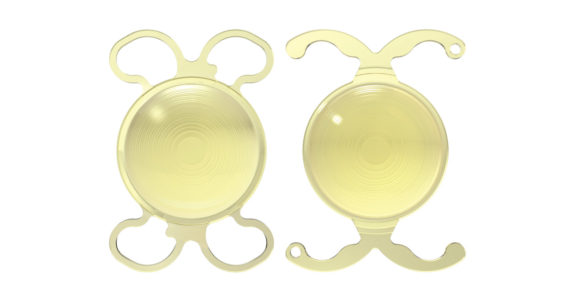Were you surprised that you had to put in more effort to read the small text after 40? You don’t have to worry. It’s natural.
Presbyopia manifests itself with a reduced ability of the eye to focus at close distance. It often comes after the age of 40, even to people who have been able to see well all their lives without glasses.
Significant advances in ophthalmology now allows patients to choose RLE or corneal implants (Phakic lens) to correct this defect.
Top medical team
State-of-the-art technology
Welcoming environment for patients
Reasonable prices
Are you active, but a dioptric defect limits you because you have to alternate two pairs of glasses or pay for expensive multifocal glasses?
We offer you the opportunity to see sharply again even after forty. In perfect harmony with modern technologies, our specialists perform painless eye surgery at our Gemini clinics, thanks to which you will get rid of your glasses. They do so by replacing an intraocular lens (RLE – refractive lensectomy) for an artificial lens, allowing you to see correctly at more distances. Artificial lenses are made of the highest quality materials and can correct several eye defects, such as myopia, farsightedness, or amblyopia. Besides, they provide eye protection against the penetration of harmful sunlight, as they contain UV filters as well as blue light filters.
How do you know if the RLE method is right for you?
Just make an appointment for a preoperative assessment. An experienced ophthalmologist performs a thorough, non-binding examination to determine if the procedure is suitable for your eye condition and which intraocular lenses can be implanted. We approach each patient individually to ensure the best result.
(+420) 577 202 202
Monday–Friday 7:00 am–6:00 pm
Would you like to ask us a question or to book an appointment slot? We will gladly make your appointment and/or help you with any of your inquiries.
The price of the phone call corresponds to the cost for a landline call according to your tariff.
Watch a short video to find out how satisfied patients are after the surgery at the Gemini Eye Clinic.
Make an appointmentFirst of all, it is necessary to undergo a comprehensive initial examination, during which we will find out the most thorough details about your vision. You will also get acquainted with the Gemini eye clinic environment and with our team of medical specialists.
The length of the preoperative examination may vary from clinic to clinic, but is approximately 1.5-2.5 hours. With the help of modern devices and thanks to experienced medical staff, we obtain data on the refractive error of the eyes, the height of the intraocular pressure, the condition of the eye’s anterior and posterior segments the condition of the tear film. We recommend coming to the clinic by public transport or having arranged somebody who can drive you back home. Your pupils will be dilated after the examination, so we do not recommend driving for at least 4-5 hours after the examination.
Don’t be afraid to ask us any questions you may have regarding the planned surgical procedure. We are here for you, and we will be happy to explain everything in detail.

After the procedure, you will wait for a few more minutes in the waiting room. The nurses will give you a postoperative report and eye drops, which you will apply into your eyes during the upcoming days according to the doctor’s prescription. You will visit your district ophthalmologist or our clinic for a check-up in the 1st week after the procedure.
Upon your arrival home, we recommend a resting regime. The eyes heal best in sleep. In the first days after surgery, vision may be worse or blurred. This is normal. Limit activities where you would attend risky places for proper vision recovery. For a period of a month, avoid dusty environments, swimming in the pool, sauna, lifting heavy things, etc. If you work in a clean environment, you can return to work in 1-2 days.

Multifocal lens – is an intraocular lens that returns a sharp vision on multiple planes. They are divided into bifocal (sharp near and far distance vision) and trifocal (sharp near, far, and medium distance vision). During RLE surgery, the surgeon gently removes the human intraocular lens and replaces it with a multifocal lens, which has, in addition to excellent optics, also special filters. These filters help protect the retina from the dangerous spectra of daylight.
Phakic lens – If the patient is between 18-45 and has a high or combined dioptric defect, implantation of a phakic lens may help them. The surgeon inserts this lens into the eye in front of the human lens, which remains in the eye. Learn more about this refractive method.